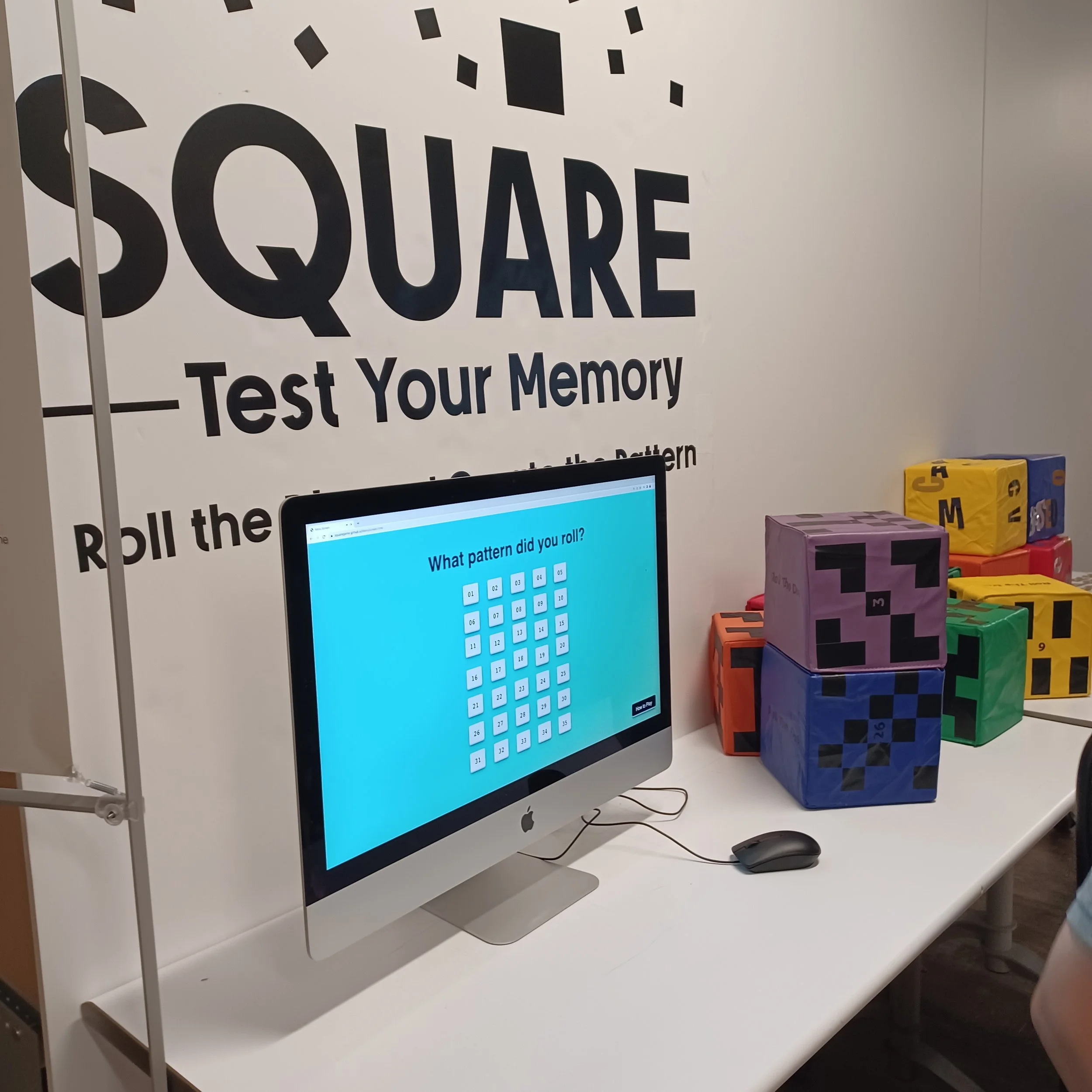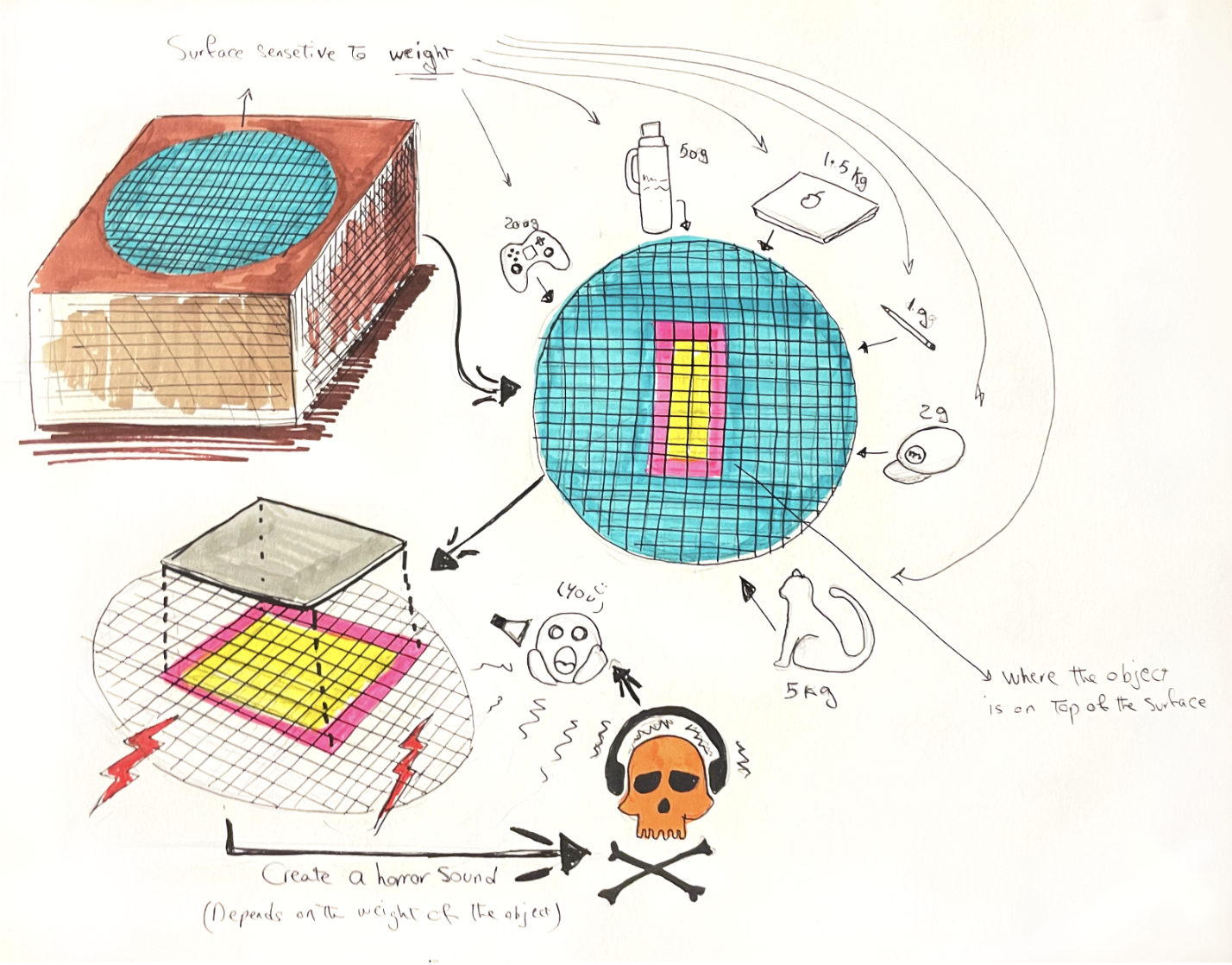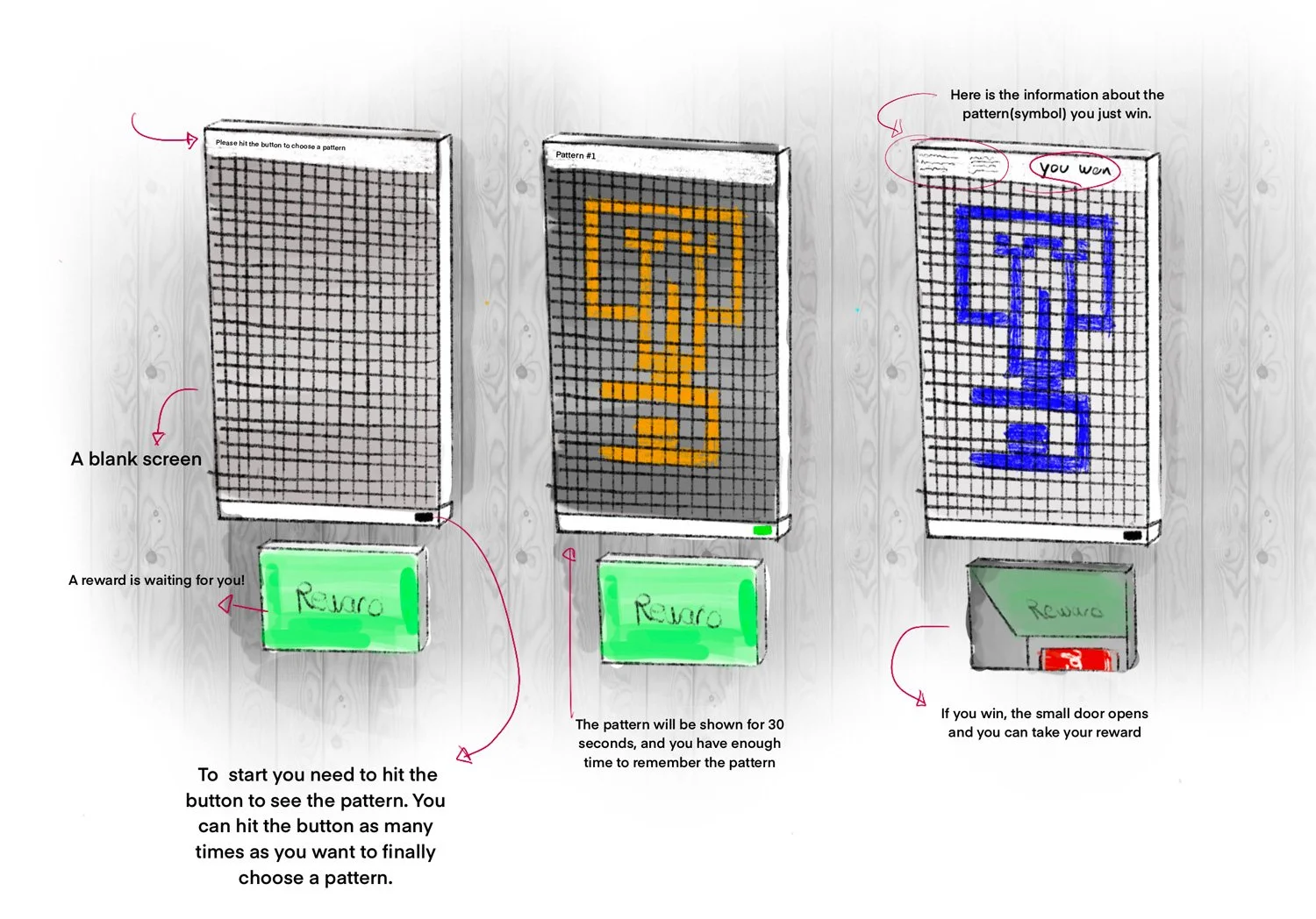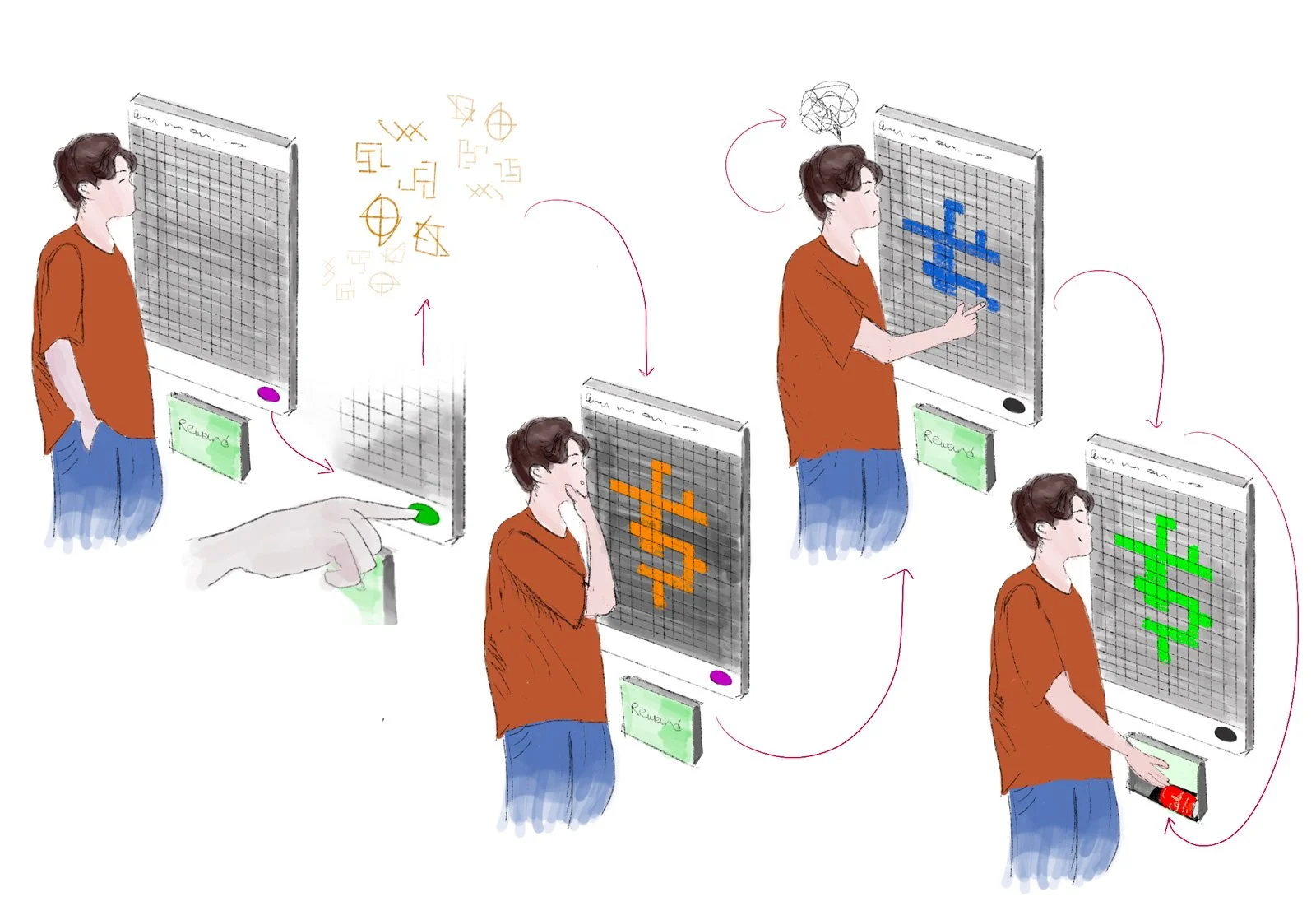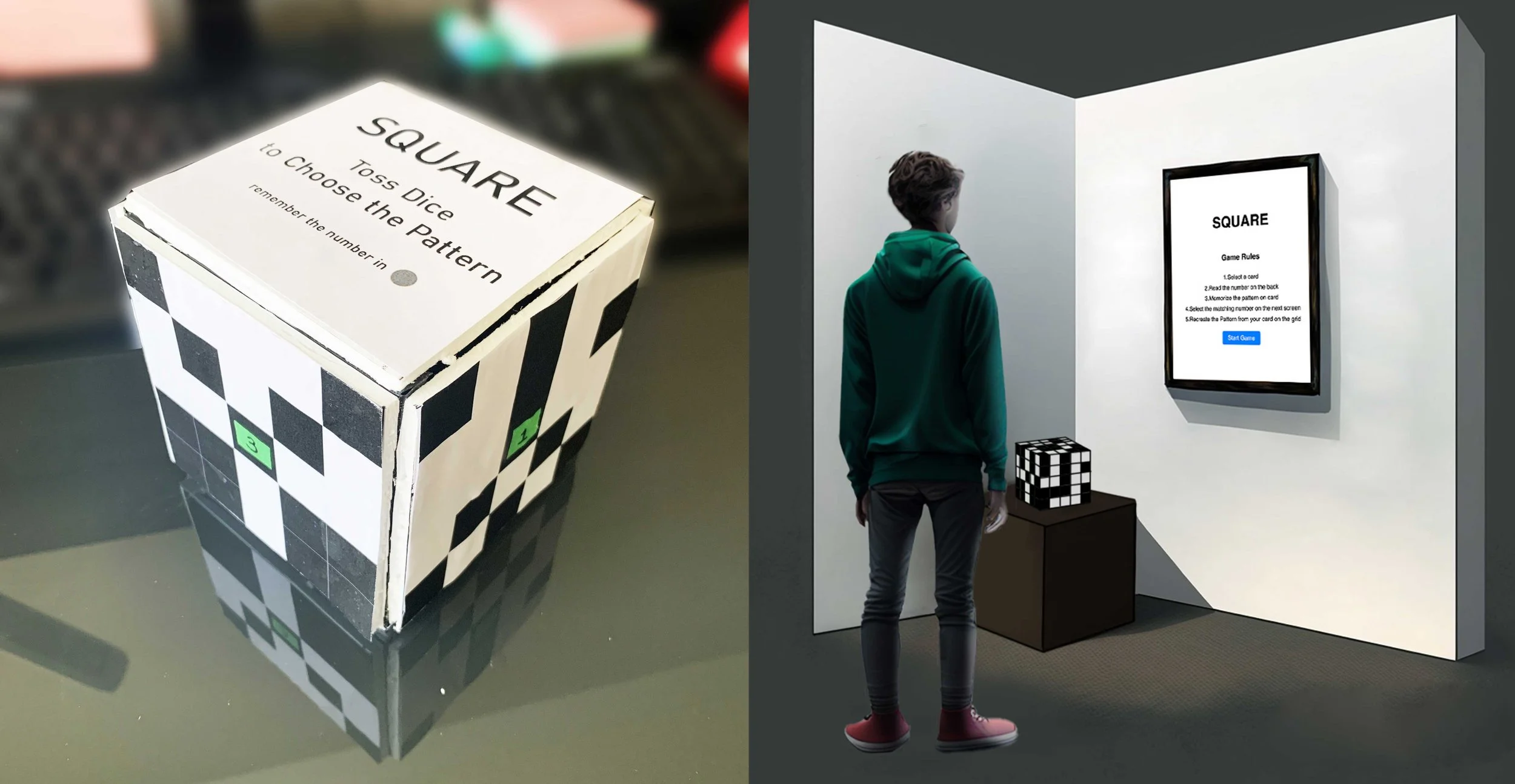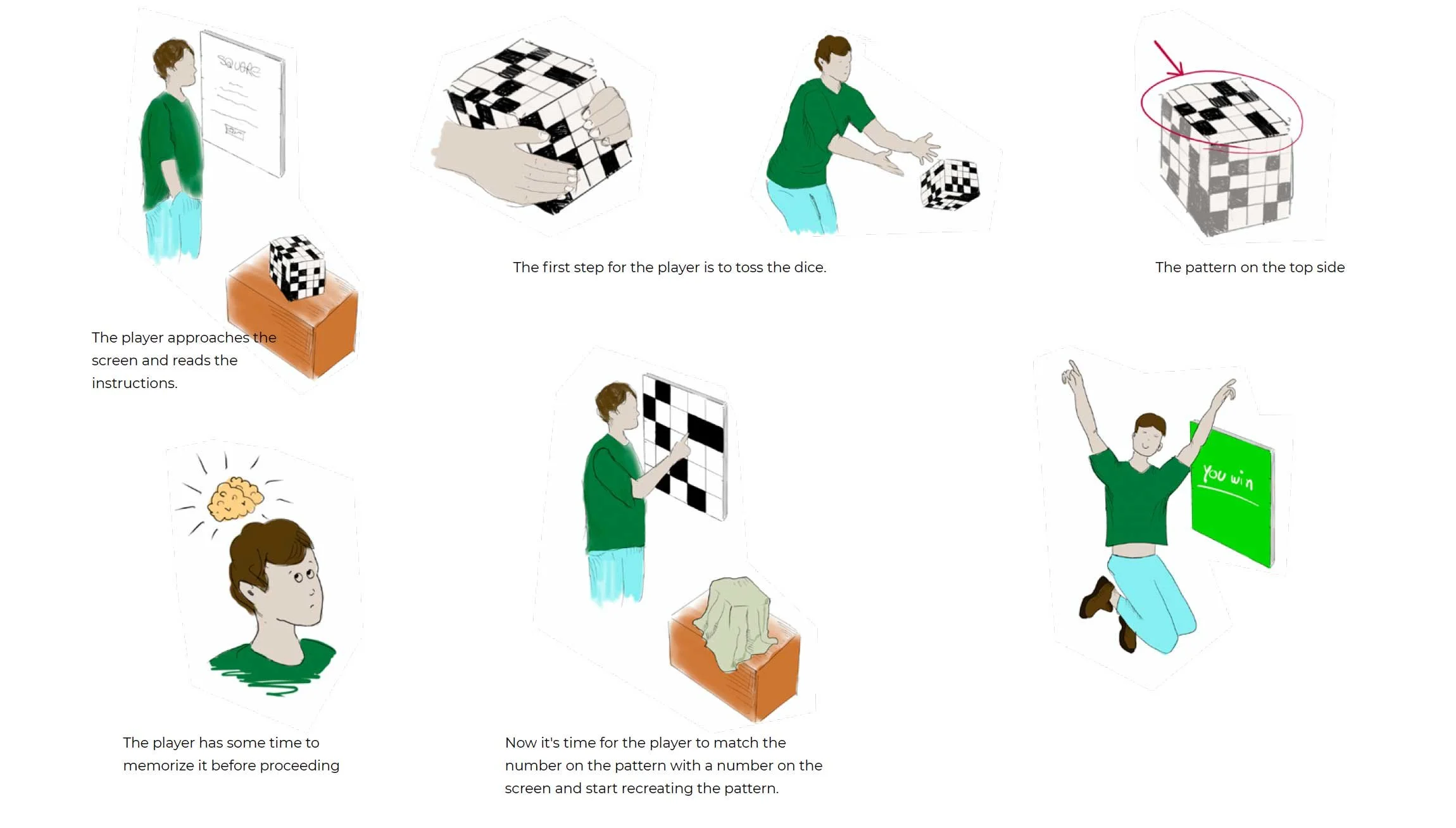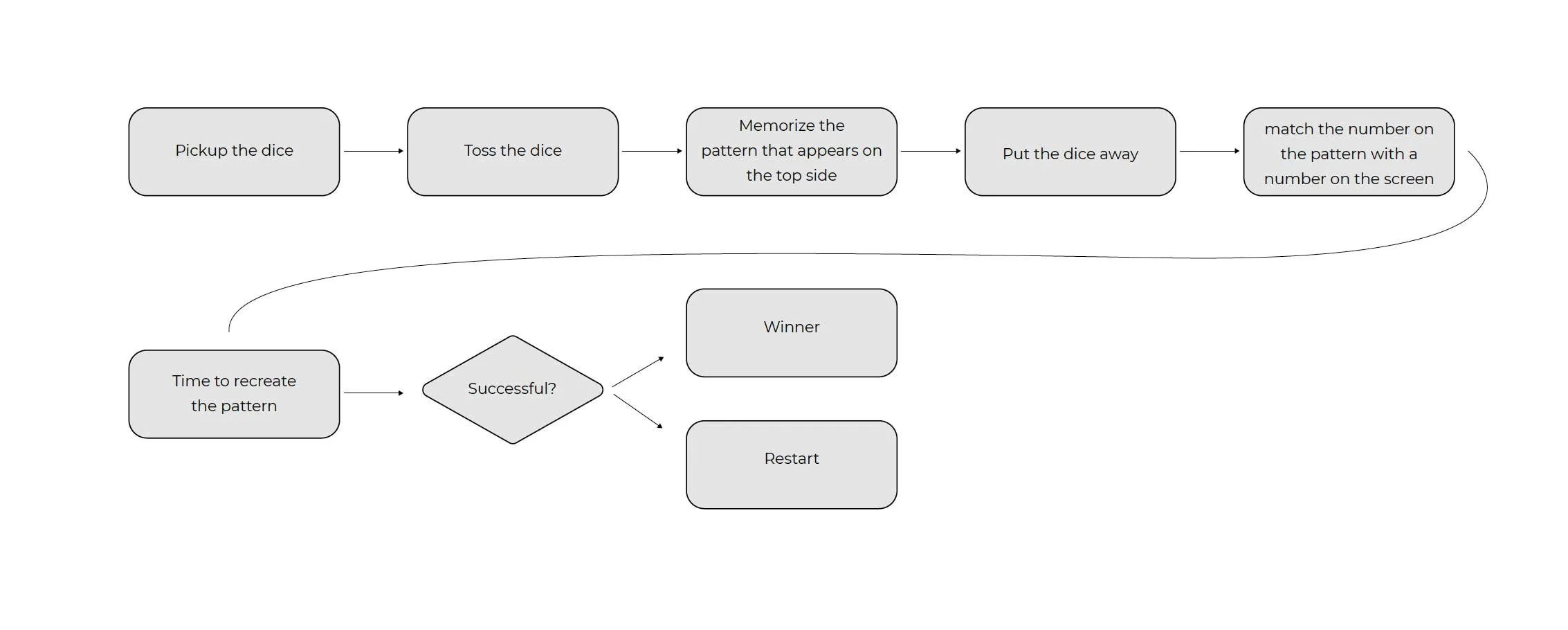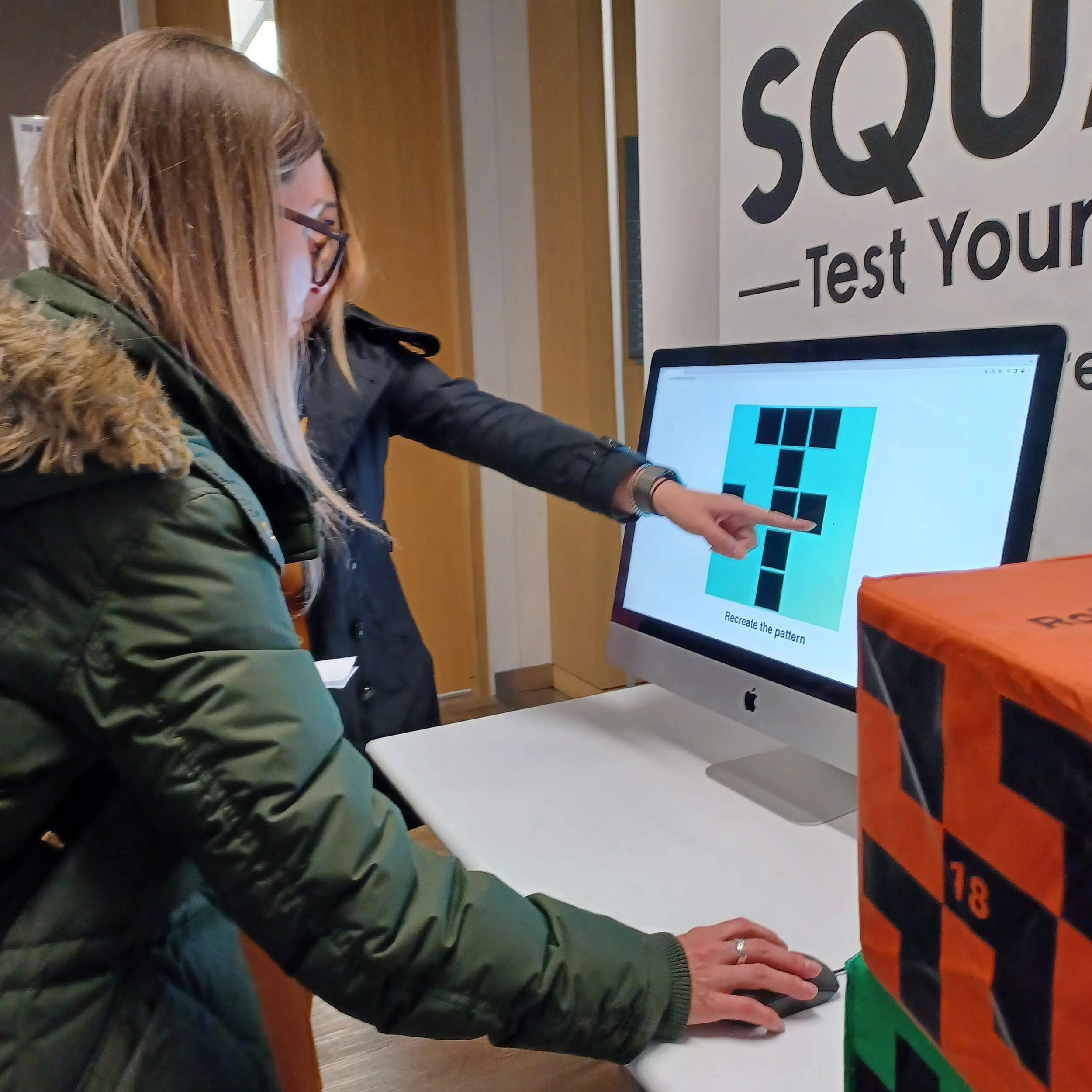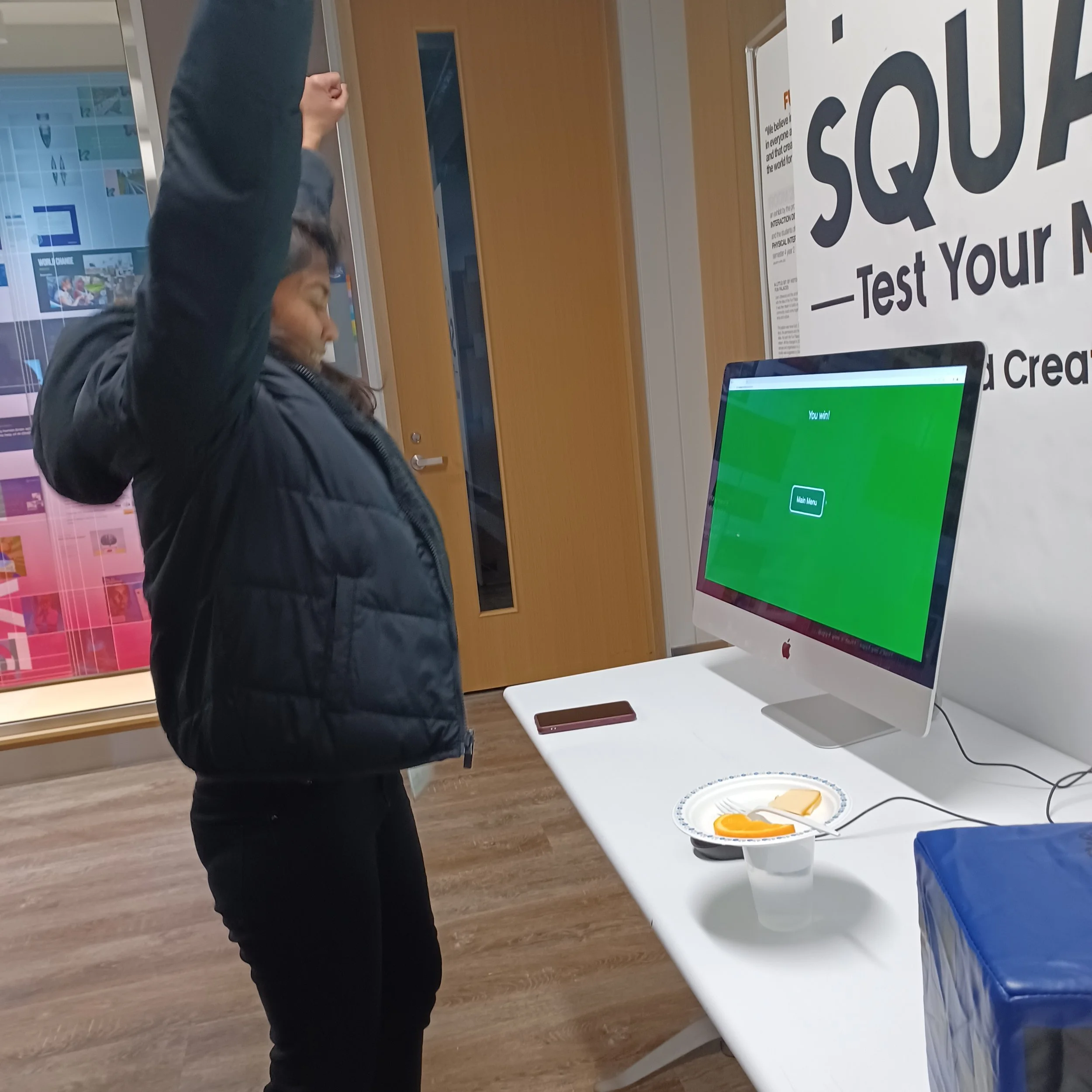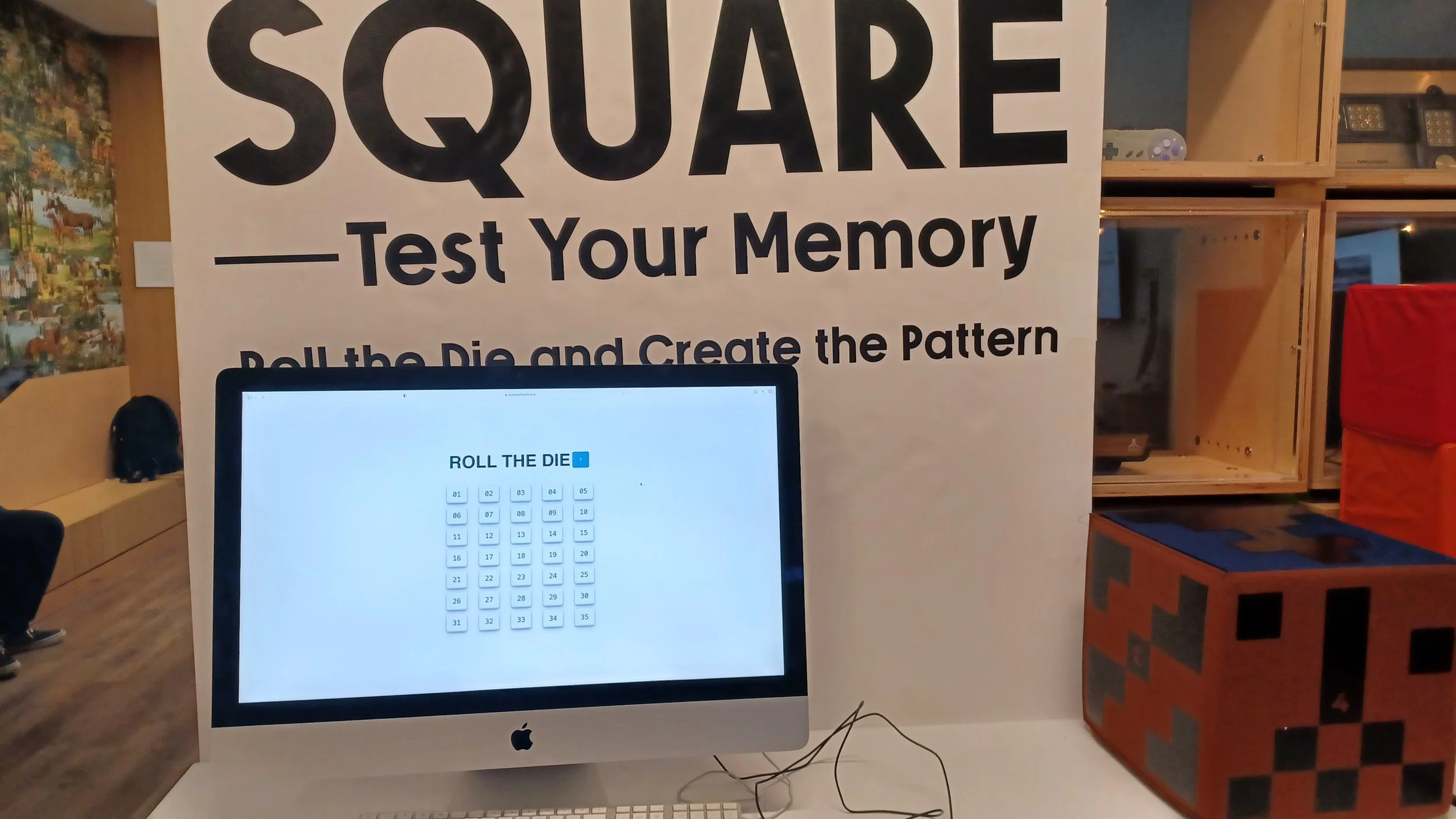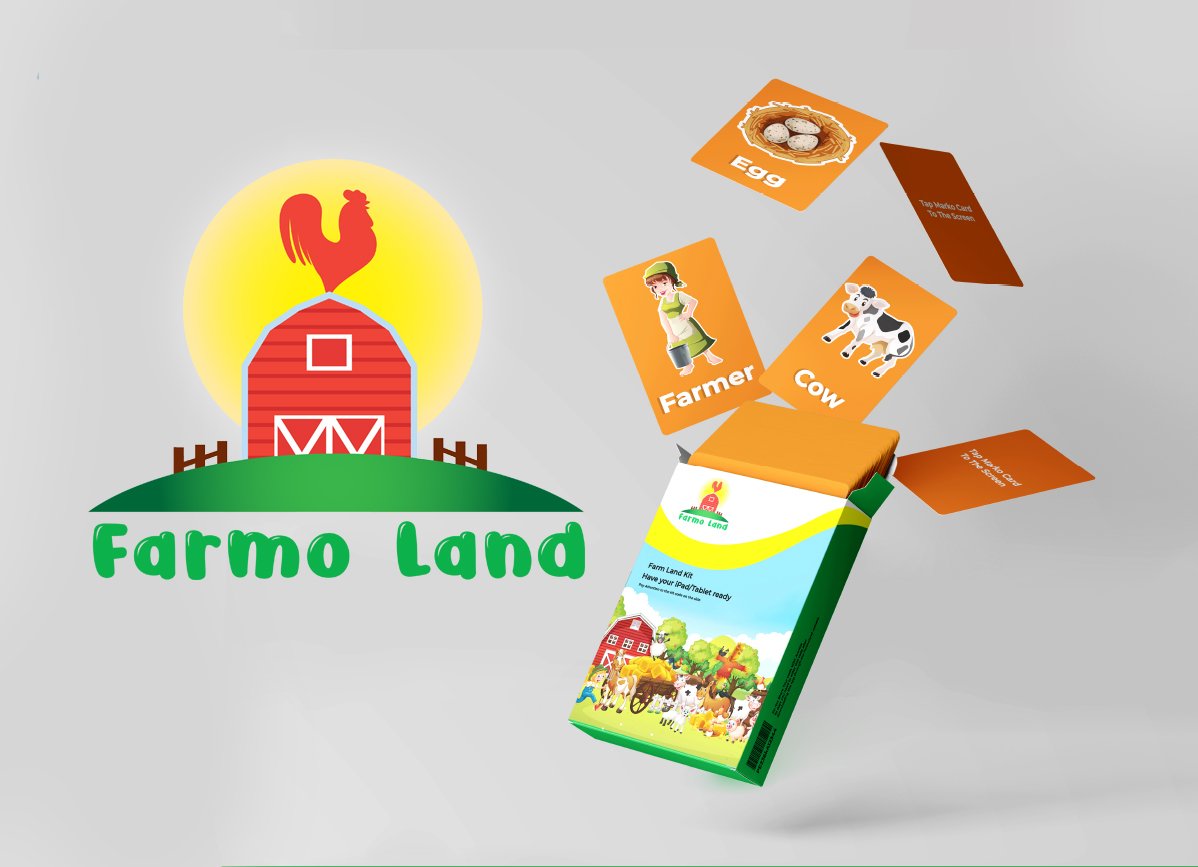Square
2023
UI Design | UX Research | Physical Interface
This project was a group endeavor, part of our school curriculum, and spanned 15 weeks, focusing on developing an interactive game. The game was designed using the Processing platform, and the gameplay involved physical components—20x20 cm square plastic tubes used like dice. Each tube's face featured a unique pattern that players had to memorize and then recreate on a 15x15 grid on the screen. A significant challenge was devising multiple user journeys and flows, which were crucial in shaping the decision-making process and the final design of the game.
Tools:
Adobe Photoshop | Adobe Illustrator | Processing | Miro Board
CHALLENGES
The main challenges of this project included deciding on a theme, a lack of familiarity with many tools and platforms, and the difficulty of integrating physical and digital components into the game. Our team had to learn how to use various technologies effectively, which was crucial for developing a game that seamlessly blended these elements. A key question we faced was determining the user experience—specifically, what would the users feel and how would the game make them feel? This inquiry was essential to ensure the game was not only functional but also emotionally engaging, providing a memorable and impactful experience for the players.
PRECEDENT STUDY
Two precedent studies that inspired our project were "Link" by Kimchi and Chips and "Dali’s Dream Tapestry." "Link" used technology and cardboard to create an interactive cityscape in Seoul, enhancing user engagement and community. "Dali’s Dream Tapestry" in Florida employed AI to transform individual dreams into a collective artwork, emphasizing personal expression and surrealism. These studies guided our integration of digital and physical elements.
DESIGN THINKING
INITIAL CONCEPT & SKETCHES
Our initial concepts for the project were varied and focused on creating engaging user experiences. The first idea was a horror-themed activity featuring a box with a weight-sensitive surface. When objects were placed on it, different sounds would play, adding a spooky touch. The second concept was about making a relaxing space, drawing inspiration from elements like water, fire, soil, and air. We planned a room with special lighting and sounds, where users could adjust the environment through a control panel inside a tent to match their mood. The third idea involved a game that used a projector to display patterns on the ground. Players needed to remember and recreate these patterns by jumping on the corresponding squares, combining digital and physical play in a fun way. Each concept helped refine our final approach to blending digital and physical elements in the game.
IMPROVMENT STAGES
First Enhancement
We refined our third idea by adapting it to space constraints, replacing the projector with a wall-mounted screen. We sketched the design and planned the gameplay where players memorize and replicate screen patterns through various levels. To enhance the fun, we added a rewards box that dispenses toys or snacks when players succeed. This adjustment made the game more engaging and accessible.
Advanced Iteration And Major Updates
We enhanced our game concept by incorporating physical cards, adding a tactile dimension to the experience. Players start by selecting a patterned card from a box, each marked with a unique number on the back. They memorize the pattern and then place the card into a toss box. To begin the game, players match the number on their card with the corresponding number on the screen, which displays the grid. The main challenge is to recreate the observed pattern on the screen by tapping the correct squares on the grid. This refined concept simplifies the start of the game and focuses on memory and coordination, intentionally omitting a rewards box to keep players concentrated on the core gameplay. This adjustment ensures our game remains engaging and aligns perfectly with our goal of enhancing memory and coordination skills.
Final Version
In the final development stage, we introduced 20x20 cm physical cubes with unique patterns on each side. Players roll these cubes and memorize the upward-facing pattern, then recreate it on a game interface. This shift from cards to cubes enhances the interactive, hands-on experience, focusing on memory and coordination. We named this game "Square" to reflect the cube shapes and grid patterns involved.
"Square" targets a broad audience, including families, students, and art enthusiasts. It is designed to be accessible and engaging for all age groups and skill levels. The interface combines a visually appealing, family-friendly design with practical features like durability and safety. Set up is straightforward, making it suitable for indoor exhibitions with varying lighting conditions.
USER JOURNEY
FINAL USER FLOW
YEAR END SHOW EXHIBITION
OUTCOME
The outcomes of this project have been very positive. The game "Square" successfully engaged players, offering them a challenging yet enjoyable experience focused on memory and pattern recognition. Participants were genuinely tested in their ability to memorize and recreate patterns. The game's design, which alternates turns after a failed attempt, ensured that all players remained engaged and eager to overcome the challenges presented. This structure not only made the game competitive but also encouraged repeated play, enhancing its appeal and the overall gaming experience.
More Projects


